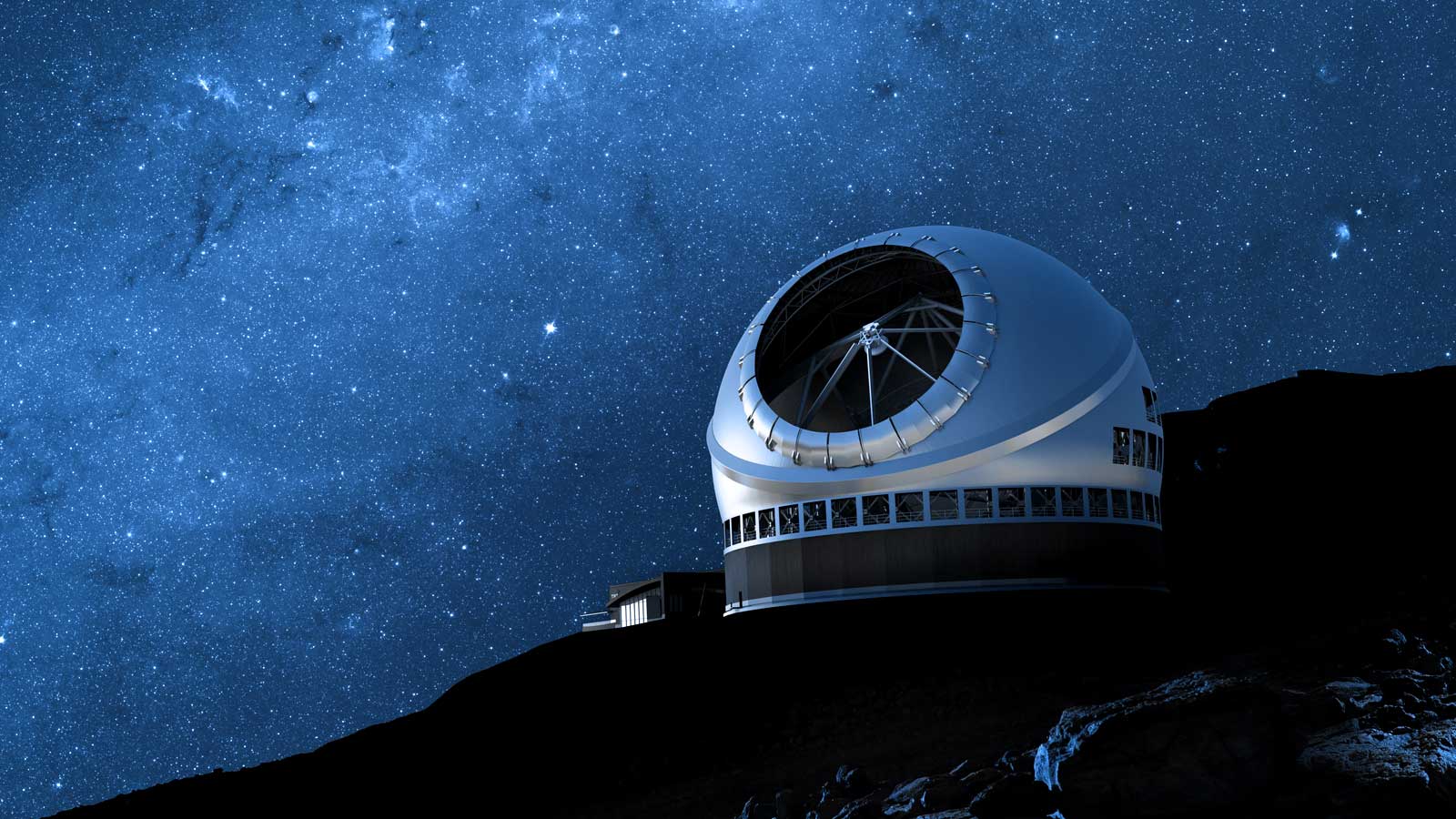
Narrow Field InfraRed Adaptive Optics System (NFIRAOS)Infrared Imaging Spectrograph (IRIS) Multi-Objective Diffraction limited High Dispersion Spectrograph (MODHIS) Wide - Field Optical Spectrograph (WFOS)
Equipped with the two deformable mirrors and six laser guide stars, TMT’s facility multi-conjugate adaptive optics system will provide a uniform, high Strehl (50% in H-band) correction across a one arcminute field view with high sky coverage. NFIRAOS will enable the measurement of the position of faint stars with 15 microarcsecond accuracy, that's the resolution of a quarter placed on the moon as observed from Earth. NFIRAOS feeds three instruments with IRIS and MODHIS being the first two.
Currrent Status: Production Readiness/Fabrication
Simulated images of the central arcsecond of our galaxy in K-band from JWST (left) and TMT NFIRAOS (right). The Super Massive Black Hole (SMBH) Sagittarius A* (4.3x106 times the mass of our sun) is marked with the white star in a circle. The white bar is 100 mas (0.1 arcseconds). NFIRAOS will provide images 4.5 times sharper than JWST. With the increased resolution, we can measure the orbits of stars around the SMBH to better understand the physics around this extreme object. Image courtesy of T. Do and the UCLA Galactic Center Group.
Fed by NFIRAOS, TMT's advanced multi-conjugate adaptive optics system, IRIS contains a near-infared imager with a half arcminute field of veiw and an integral field spectrograph. IRIS will simutaneously capture images and spectra of faint targets. IRIS will observe stars, galaxies, and planetary syatems, and is capable of resolving the motion of stars around black holes in the center of nearby galaxies.
Current Status: Final Design Phase
IRIS on TMT will allow us to explore volcanism on other objects in the solar system. Simulated comparison of imaging of Jupiter’s moon Io, by the W.M. Keck Observatory and TMT IRIS instrument. Image Credit: Tuan Do (University of California Los Angeles), the TMT InfraRed Imaging Spectrograph collaboration, and TMT International Observatory, LLC.
MODHIS will deliver high resolution spectra and precision radial velocities in the near infrared aided by the adaptive optics correction of NFIRAOS. With its high sensitivity and precision, MODHIS will explore exoplanetary atmospheres and stellar dynamics, seeking life signatures like oxygen and methane around distant worlds.
Current Status: Conceptual Design Phase
WFOS will capture images and spectra across a large field of view, from ultraviolet to near-infrared wavelengths. WFOS’s ability to obtain spectra for up to 96 targets simultaneously makes it ideal for studying everything from objects in our solar system to distant galaxies. With its powerful multi-object spectroscopy, WFOS will allow astronomers to survey large regions of the sky efficiently, providing insights into galaxy formation, evolution, and the nature of dark matter.
Current Status: Preliminary Design Phase
The entire TMT observatory has been designed to support a wide range of different forms of facility class instrumentation. To do this, a suite of instrument concepts was developed and the observatory design was developed around them. These longstanding ideas for instruments have continued to evolve. Several instrument concepts are being actively developed and are evolving beyond the original ideas: MICHI a mid-infrared spectrometer, IRMOS a multiple IFU infrared spectrometer, HROS a high resolution optical spectrometer, and PSI a high contrast planetary finder and characterizer.